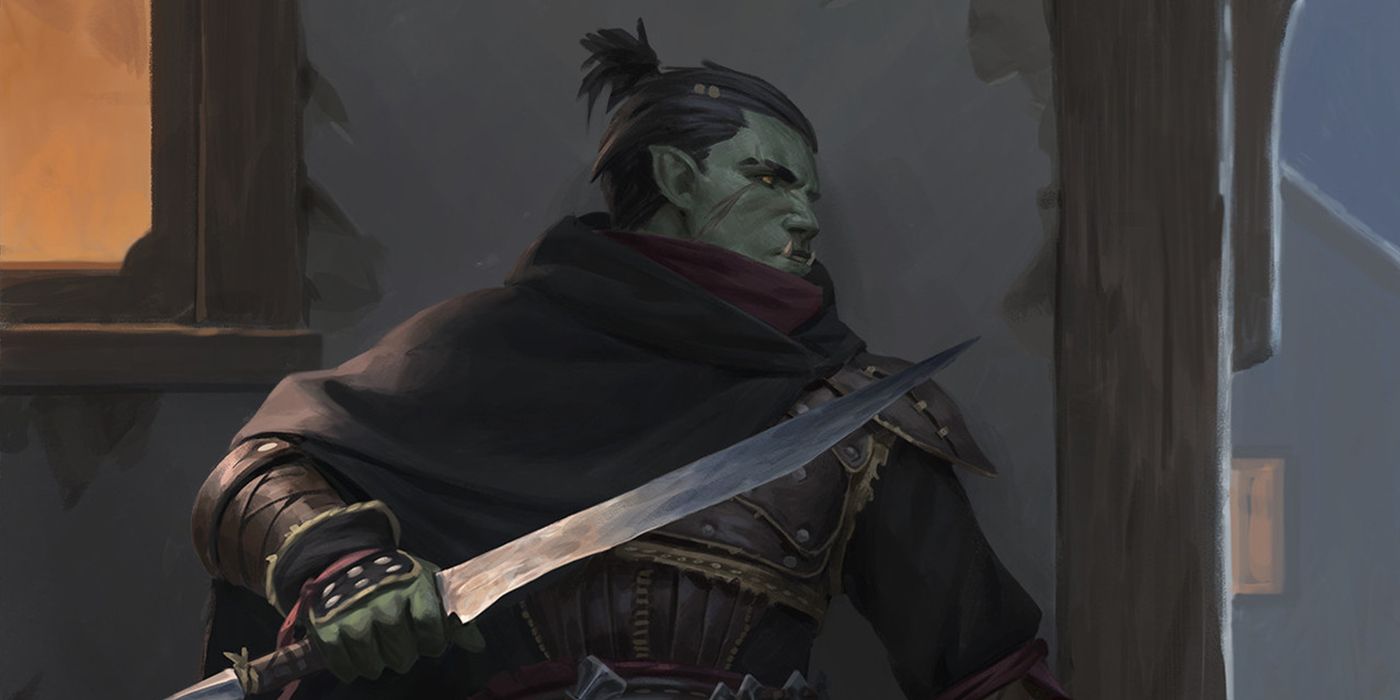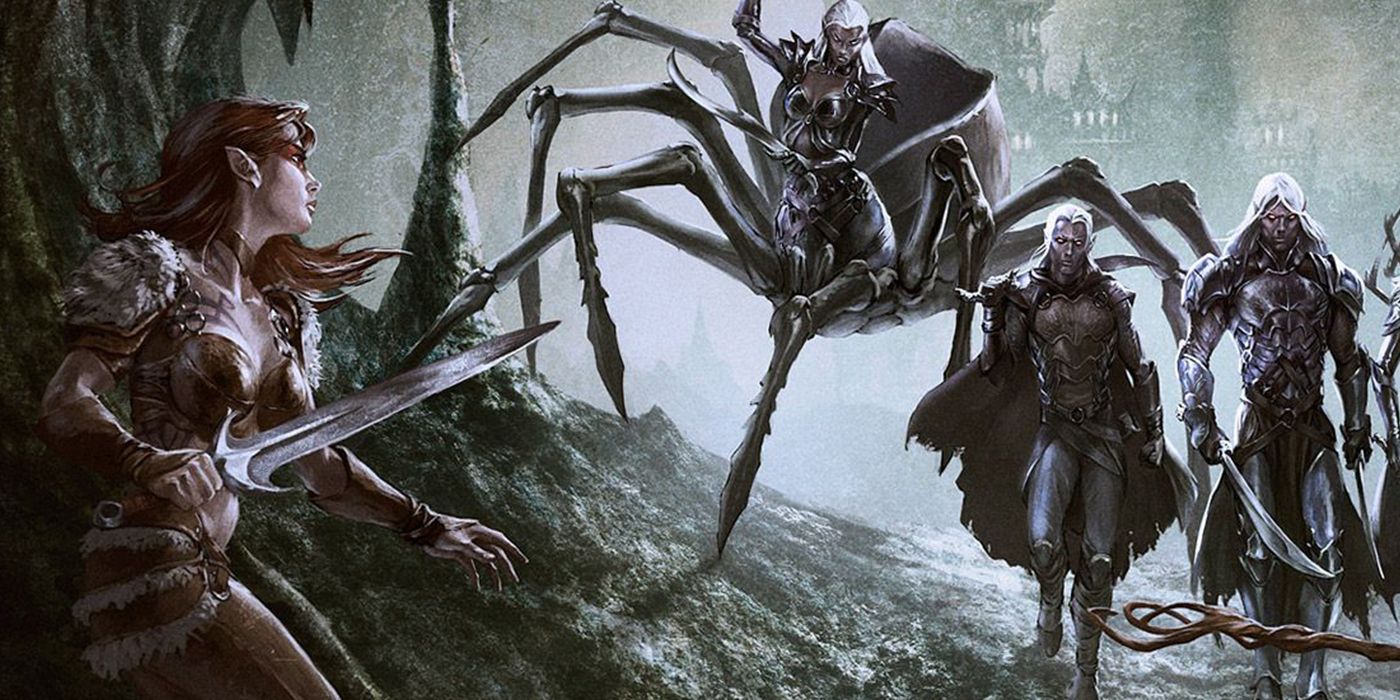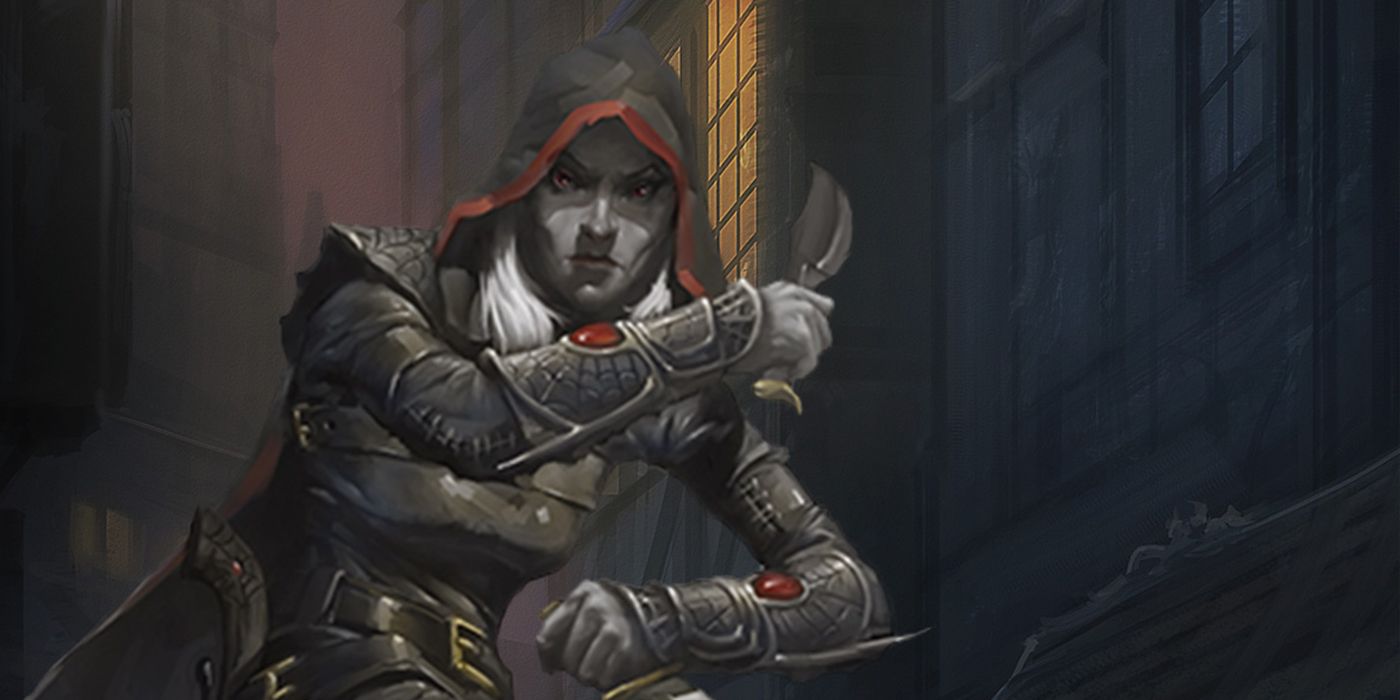For those who love to operate in stealth, weave through combat like a shadow, or just play a lovable kleptomaniac in Dungeons & Dragons, the rogue would be the class of choice. And when players follow a particular formula of stats, abilities, and more, they can end up with a rogue that fills in all the gaps a party might have—after all, rogues make for ideal scouts, strikers, and party faces, being one of the most versatile classes available in D&D 5e.
As generalists, rogues may appear weaker than other classes in...well, most areas. Other melee classes like fighters and barbarians have more HP and deal more consistent damage, while spellcasters can exercise more battlefield control and bards are, truly, the most suited to being a party face than any other class. However, knowing where to focus the rogue's skills and how to play one is where the class's true power can be found. With battlefield mobility unlike any other class and the ability to deal nearly unparalleled amounts of damage in one hit, rogues really are a fantastically fun and useful class to play.
A Roguish Race
The first choice players will face in character creation is that of race, and a few racial options come with ability bonuses that suit a rogue perfectly. For that best rogue build, players choosing from the basic Players' Handbook should strongly consider an elf, human, or halfling. Humans are designed to be versatile and therefore suitable for any class, and variant humans also get to choose a pretty cool feat right at level one, so it's impossible to go wrong with a human character. Elves have the dexterity bonuses that a rogue needs and darkvision to boot, so they're the perfect match for a rogue; wood-elves, in particular, are the best choice, as they've also got an extra 5 feet of movement and stealth abilities of their own. Lightfoot halflings also have a great dexterity bonus and a little built-in luck of their own, so the only real drawback to choosing them would be the lack of darkvision.
Looking outside of the automatically available races, players willing to explore some of the official D&D supplements should also take a look at tabaxis and aarakocra. Tabaxis are, arguably, even better suited to the rogue class than elves; they've got the dexterity bonuses, proficiency in two important skills, a climbing speed, darkvision, and feline agility—it really doesn't get any better than this. Aarakocra get a decent dexterity bonus, but their real appeal is flight. Rogues are defined by their ability to move around a battlefield quickly and easily, and the Aarakocra's wings make it even easier.
Picking Attributes
Ability scores decide just how good a character is at all the various skills available to them, so naturally, a rogue's highest ability score, bar none, needs to be dexterity. It's mandatory regardless of the build, and attack bonuses, damage, AC, and initiative go up with every ability score increase as well.
The next two important stats can actually vary depending on the build; in general, constitution and wisdom should be the two next-highest stats, as perception (wisdom) is a critical skill for rogues and constitution determines the character's HP pool. However, arcane tricksters will instead want their intelligence score to be on par with their dexterity, as that is how they cast spells in D&D. Swashbuckler rogues, meanwhile, will need charisma to be their secondary stat rather than either wisdom or constitution. If the rogue is neither an arcane trickster or a swashbuckler, then intelligence and charisma become the third and fourth-most important stats—not the dump stat, but not necessary for much of anything either.
Therefore, that makes strength the obvious dump stat. All of a rogue's combat abilities are dexterity-based, and no other skills are based on strength, so every other ability score should be higher up than this one—rogues really don't need it, even when facing up against the weirdest creatures in the Monster Manual.
Roguish Archetypes
Now it's time to pick the subclass, of which there are six options: thief, mastermind, swashbuckler, scout, arcane trickster, and assassin. Between all those choices, arcane trickster and swashbuckler are the two frontrunners for a truly great rogue build, so let's discuss each of those first.
Arcane trickers enhance their natural stealth and agility with magic, learning enchantment and illusion spells to give them an edge. With magic on their side, these rogues can still disarm traps, pick locks, and rob people blind—they just have abilities that allow them to do it in a way that often eliminates the risk of being caught or hurt. Magic also makes arcane tricksters even more versatile as characters than rogues of other subclasses.
Swashbucklers really stand out among the roguish archetypes, both in terms of their abilities and roleplaying flavor. They're masters of single combat and two-weapon fighting, while also providing defense, offense, mobility, and battlefield control in combat. The swashbuckler's special abilities prevent attacks of opportunity, give them bonuses to initiative, and allows them to grab a creature's attention—or charm them, outside of combat—through sheer panache.
As for the rest of the roguish archetypes, their flaw tends to be that they're strong in the one type of situation they're built for and average in every other sense. Take the assassin, for example: when the assassin can get the drop on an enemy, they deal insane amounts of damage in a hit, but once regular combat begins they don't really have anything special up their sleeve like a swashbuckler or arcane trickster might. Players can still get some great use out of them or any other rogue, but the best build award goes to the two aforementioned archetypes.
Skills and Feats
No need to try on a bunch of skills and feats while leveling up; here's a list of everything a rogue should have. When it comes to class skills, rogues need to make sure they've got proficiency in perception, stealth, and investigation. When playing a swashbuckler, persuasion also becomes a critical skill to have mastered, and arcane tricksters might place higher importance on arcana. Beyond those, if there's still room for a couple more skills, deception and insight are always nice, since conning people and discerning someone's true motivations are right up the rogue's alley.
In terms of feats, Alert, Mobile, and Lucky are universally useful regardless of the rogue's archetype or combat style; any rogue should strongly consider taking them. Alert grants a large bonus to initiative and makes it impossible for the rogue to be taken by surprise, which is always a good thing, while mobile gives an extra 10 feet of movement and free disengages even if the rogue misses in their attack. And Lucky is so powerful a feat that's it's nearly rule-breaking, granting three free d20 rerolls per day. Rogues specializing in ranged combat will also want the Crossbow Expert feat paired with Sharpshooter, as this combination will make for the highest damage a rogue can get.
The rogue's final touches should be a fitting background such as Charlatan, Criminal or Faction Agent. From there, players should be set up with the best rogue build possible—and hopefully, see just why the rogue is such an integral and beloved class in Dungeons & Dragons. Sure, parties can function without a rogue, but why would they want to? A rogue's high number of skill and tool proficiencies alone make them characters that the party will unfailingly and consistently rely upon.



